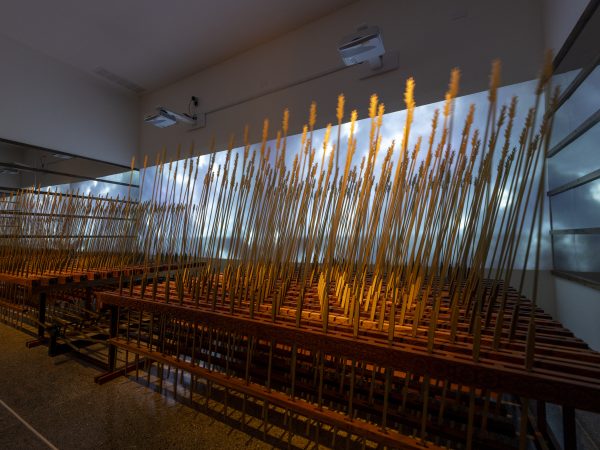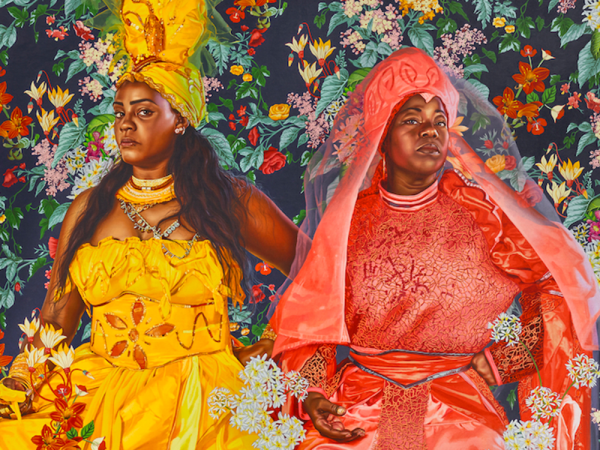
(im)permanent collection
Ongoing
Elizabeth S. Navas Gallery
Louise Caldwell Murdock Gallery
About This Exhibition
With the exhibition (im)permanent, WAM celebrates our prized permanent collection—what our museum owns—of more than 10,000 artworks. (im)permanent is an umbrella exhibition featuring a series of smaller, frequently changing exhibitions that focus on a specific theme, highlight a new acquisition, or take a deep dive into a period of American art. Pairing WAM favorites with artworks that have been in storage for decades, these focused exhibitions explore the collection in fresh and dynamic ways.
Come back again and again as (im)permanent continues to change—at WAM, the display of our permanent collection is anything but permanent!
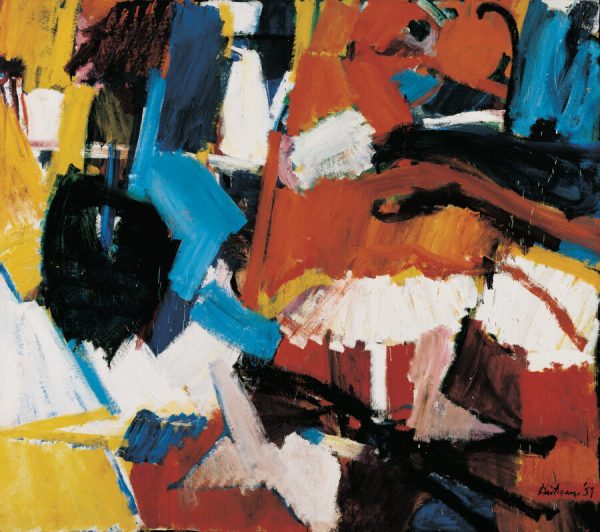
Grace Hartigan, East River Drive, 1957. Oil on canvas, 70 1/4 x 79 1/4 inches. Wichita Art Museum, Robert and Betty Foulston Fund, 1989.21
(im)permanent exhibitions now on view:
-
90 YEARS OF AMERICAN ART
July 25. 2025 - Ongoing
At 3 p.m. on September 22, 1935, the Wichita Art Museum opened to the public.
WAM was the vision of Louise Caldwell Murdock. 20 years earlier, Murdock left her fortune for the purchase of American art if the city would build and manage a museum to house the collection. Built on eight acres of the former Stackman farm, the opening of the building in 1935 meant that Wichitans—for the first time—would have their own art and a place to see it.In 1938, the people of Wichita gave the museum its first work of art, the sculpture Saint Francis. In 1939, the museum made its first purchase for the Roland P. Murdock Collection, the painting Kansas Cornfield. Today, WAM holds more than 10,000 artworks for our community. 90 Years of American Art celebrates this history. The exhibition begins with some of the museum’s first acquisitions and then moves through time to highlight beloved favorites, representative examples from key collections, and a few recent acquisitions. Join us in celebrating 90 years of American art at WAM!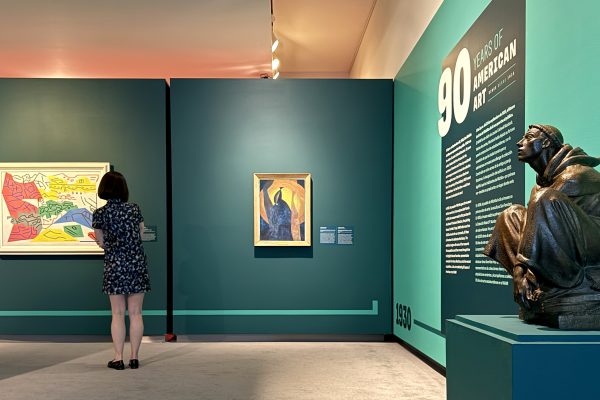
-
Home and Place
August 3, 2024 - Ongoing
In a world long before this one, there was enough for
Everyone,
Until somebody got out of line.
–United States Poet Laureate Joy Harjo (Muscogee),
“Rabbit Is Up to Tricks,” 2015Are home and place the brick and mortar that house us and the ground beneath our feet? Or are home and place at least as much in our heritage, relationships, and histories? What is the significance of home and place for Native Americans, whose homelands were seized and their communities displaced?
These are questions that contemporary Native artists, including Fritz Scholder, Norman Akers, and Tony Abeyta, raise in their art about the complexity of Native people’s relationship to home and place. Taken together, the artists in this exhibition visualize diverse viewpoints—both about the legacies of displacement as well as the joys, beauties, and richness of what it means to be Native to a place and to make that place one’s home.
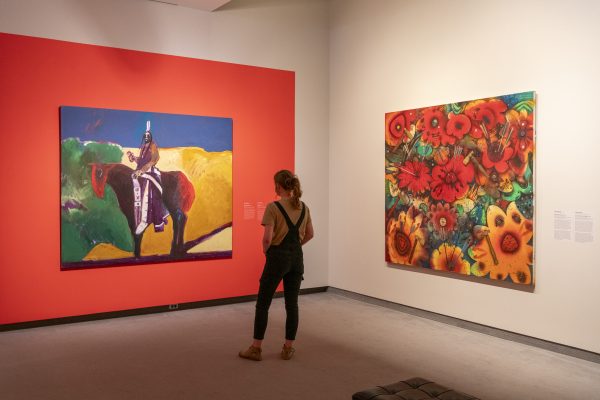
-
Origin Stories: Highlights from the Roland P. Murdock Collection
December 22, 2023 - Ongoing
“Wichita? Mrs. Navas is a careful shopper. Result—she collects good pictures.” –Artist Walt Kuhn, 1948
The Wichita Art Museum owes its existence to the passion and vision of two women, Louise Caldwell Murdock and Elizabeth Stubblefield Navas. In 1915, Murdock made it her mission to ensure that her hometown of Wichita would have an art museum, donating her family fortune—her husband Roland P. Murdock was the business manager and co-owner of The Wichita Eagle—to purchase a “significant collection” of American art. Murdock entrusted Navas, her friend and colleague, with the task of assembling the collection that would become the core of the Wichita Art Museum. Preparing for the day that she would become a major collector, Navas moved to New York City, where she immersed herself in the art world and learned from leading art historians and critics. In 1939, she made her first purchase, John Steuart Curry’s Kansas Cornfield. (Although Louise Caldwell Murdock died nearly 25 years earlier, money from her estate was not available until the late 1930s.) For the next 20 years, Navas acquired art for the museum, including the works displayed in this gallery, aiming to “present visually a history of the culture of the United States.” She lived her life in service of Murdock’s dream to establish WAM as a great American art museum on the Kansas prairie.

-
Person of Interest
February 26, 2025 - Ongoing
No two personalities are the same and no two faces are alike. These two facts are the foundation of portraiture, which aims to capture both the exterior and interior of a person. How does an artist depict an external likeness while also evoking something of a person’s spirit? Is a portrait more about the artist—their style and point of view—or the person being depicted? Person of Interest features portraits from the Wichita Art Museum collection, all of people who were notable in their own moment. From business leaders in early America to artists and cultural leaders to famous celebrities, this exhibition explores how we represent and commemorate others.
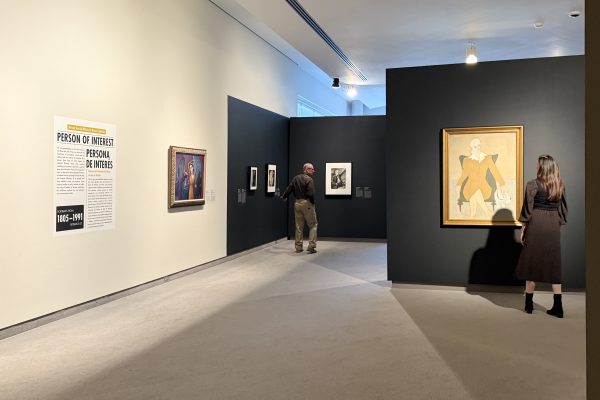
-
America at Work: Images of Labor from the Wichita Art Museum Collection
December 23, 2023 - Ongoing
As a young country attempting to define itself in the 1800s, the United States—and American artists—celebrated the nation’s vast landscape as a symbol of the country’s prosperity and potential. By the early 20th century, however, artists increasingly embraced the American worker and American industry as the true symbols of the nation. Many of the paintings in this exhibition celebrate the laborer—the farmer and rancher working the land, maintenance men keeping up US cities, and mothers raising children in difficult conditions. At the same time, artists used images of labor and industry to highlight the plight of the worker, particularly during the Great Depression in the 1930s. These images valorize the American farmer, miner, and factory worker while revealing the barriers—particularly racism and generational poverty—they endured in pursuit of the American Dream. Each image speaks to work and life in the US—despairing or hopeful, commonplace or
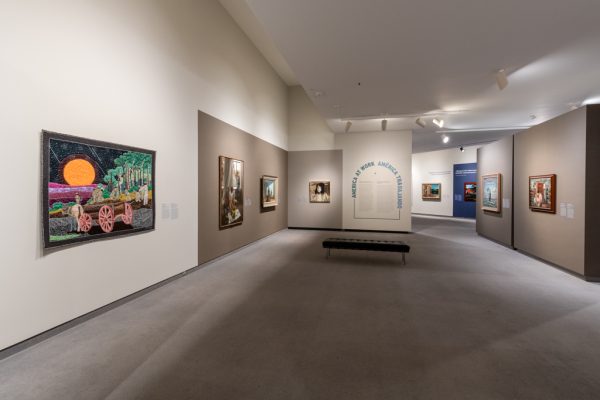
Past (im)permanent exhibitions:
-
Hard Edges and Lyrical Visions
December 23, 2023 – July 6, 2025
In the 1950s, American abstract art—called “the new American painting”—was the first United States art movement to make a truly global splash. It is easy to see how rural landscapes or city life in New York represented the country, but big black circles or rainbow-colored squares? In the middle of the 20th century, though, abstraction meant progress, a definitively American value. Bold, experimental, individualistic, forward thinking—these characteristics of abstraction were all understood to be quintessentially American. Although the story of abstract art at that time was told mainly through the headlines of a few larger-than-life, paint-splattered white men, abstract artists were a diverse group that included women and people of various ethnic and racial identities. They—and artists who continue in the tradition today—drew inspiration and meaning from diverse heritages and histories. Featuring canonical names with other artists who are less well known, Hard Edges and Lyrical Visions celebrates the various strands of modern and contemporary US abstraction.
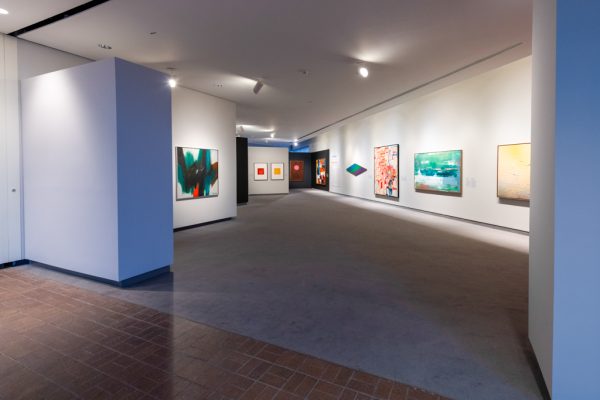
-
The Personal is Professional: Artists’ Friends and Family
December 23, 2023 - February 16, 2025
Creators have drawn inspiration from the people in their lives for centuries. For instance, author and comedian David Sedaris uses family material so often that he once sat in a Q and A session thinking “how odd it was that these people seemed to know so much about my brother and sisters.” Taylor Swift, whose iconic song writing is partly defined by its frequent references to her former lovers, made a lighthearted reference to this reputation in a song: “I bet you think about me when you say/ ‘Oh my God, she’s insane, she wrote a song about me.’” The artists featured here suggest that no insanity is required: they all look to their relationships—family, friends, romantic partners, and acquaintances—for everything from cheap models to intimate character studies.
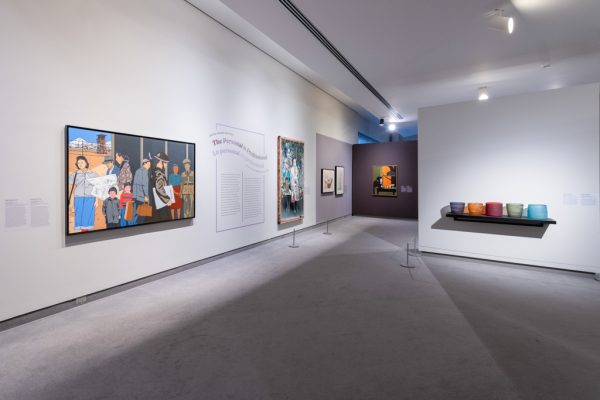
Discover our ever-evolving collection by visiting frequently. Enjoy free general admission every time!

